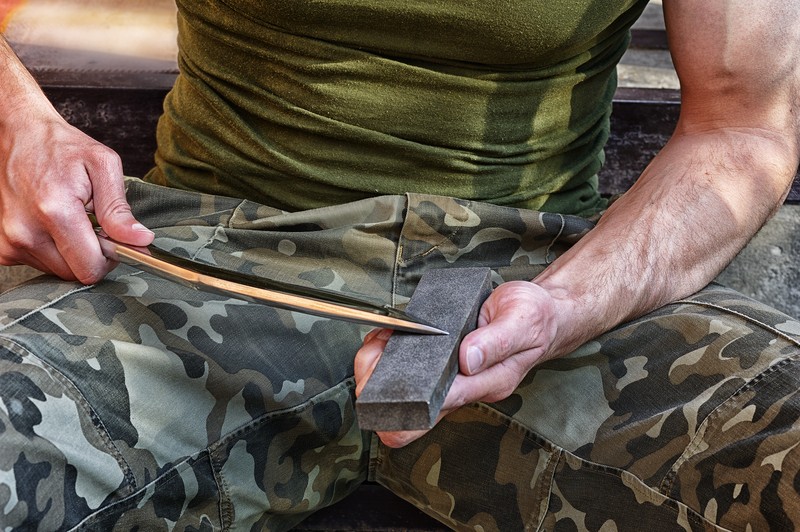Have you heard of the saying that a knife is only as good as the edge it holds? Well, it's true. A safe edge is a sharp edge because it is less likely to slip. Not only that, but it also will require a lot less force to slice through what needs to be cut.
However, don't be blinded because not every knife works the same way. Some need a steeper cutting angle whereas other knives need a narrow blade that'll result in fine slices.
A variety of methods in regards to sharpening a knife will lead to different results. Today there are many sharpening tools to purchase that thankfully can lead to a polished edge that's quick and smooth.
Understanding the difference between a sharpened knife and a knife that will not get the job done will make sharpening your blade an easier prospect. Of course, this all depends on what the most reliable tools are.
After the break, uncover the secrets as to how you can get the sharpest blade and enhance the knives you already own.

Alishia here for when I’m not around
Tommy Barnes
Josh Williams
Cody Duncan
Joey Dalessio
Anyone know the kukri he’s using in the thumbnail? I need a new Kukri.
It all starts with the steel from which it is made. You can sharpen that cheap 420 stainless to a razor edge, then dull it slicing a peach.
There is also such a thing as a blade being “too sharp” as it depends on the work it is intended for. A blade used for filleting fish should not be used to chop wood. There should be a pronounced difference between the profile of a skinning and a splitting axe.
I say this all the time, the key elements in blade selection are steel type and grind type. Hard, high carbon steel will hold a keen edge, but hard=brittle and a hard blade is likely to crack or break if poorly tempered. Flexible blades can bend and spring back or be hammered out, but they are soft and, therefore, do not hold an edge as long.
Differential tempering allows for a keen (hard) edge with a shock-absorbing (soft) spine. As for the grinds, the thinner the profile the keener the edge, at the expense of durability.
I find that Scandinavian and Moran grinds are best for camp and field blades, with a small knife for fine work, having instead a flat or Emmerson grind.
^Well said, I agree 100%
or just get a work sharp belt sharperner and get it shaving sharp in seconds….and a stropping blade to maintain it?
Ted Strimback
Scott